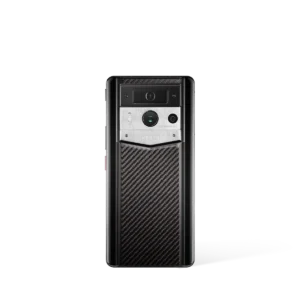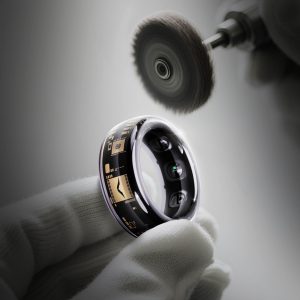Are you struggling to choose between a sleek smart ring and a traditional fitness tracker? Understanding their core differences is crucial to making the right investment for your health goals.
What You'll Learn:
- The fundamental differences between smart rings and fitness trackers.
- How to get started with and best practices for using smart rings for fitness.
- The expected health benefits and measurable results you can achieve.
- A comparison to help you decide which device best suits your lifestyle.
Part 1: Understanding Smart Rings for Fitness Tracking
Smart Rings for Fitness Tracking Fundamentals
The landscape of wearable health technology is constantly evolving, offering more discreet and integrated ways to monitor our well-being. Smart rings represent a significant shift from the more conspicuous fitness trackers and smartwatches. Unlike their wrist-worn counterparts, smart rings are designed to be worn on your finger, often blending seamlessly with everyday jewelry. Their primary function is to collect a wide array of biometric data, which is then processed and presented through a companion mobile application. This data can include heart rate, heart rate variability (HRV), body temperature, sleep patterns, activity levels, and even readiness scores.
Key Concepts
At their core, smart rings leverage advanced sensors embedded within a compact, durable design.
- Sensor Technology: These rings typically house optical heart rate sensors, temperature sensors, and accelerometers. Some advanced models may also include PPG (photoplethysmography) sensors for more detailed blood flow analysis.
- Data Collection: The sensors work continuously, capturing data points throughout the day and night. This passive collection is a key differentiator, aiming to provide a holistic view of your health without requiring active engagement.
- Companion App: The real magic happens in the accompanying app. This is where raw sensor data is translated into actionable insights. You'll find detailed breakdowns of your sleep stages, recovery scores, daily activity goals, and trends over time.
- Focus on Recovery and Sleep: While many smart rings track activity, a significant emphasis is often placed on sleep quality and recovery. This makes them particularly appealing to athletes, biohackers, and individuals prioritizing holistic wellness.
Part 2: Smart Rings for Fitness Tracking Implementation
Getting Started
Adopting a smart ring for your fitness journey is a straightforward process, designed for minimal disruption to your daily routine.
- Choosing Your Ring: Research different brands and models. Consider factors like battery life, specific features (e.g., SpO2 monitoring, guided breathing exercises), app interface, and price.
- Sizing: Most brands offer a free sizing kit. It's crucial to get an accurate fit, as this directly impacts the accuracy of the sensor readings.
- Pairing: Once you receive your ring, download the dedicated app and follow the on-screen instructions to pair your ring with your smartphone via Bluetooth.
- Initial Setup: You'll likely be asked to provide some basic information, such as your age, gender, weight, and height, to help personalize your health insights.
- Wearing the Ring: Wear the ring on your finger consistently, especially during sleep and workouts, to ensure continuous data collection.
Best Practices
To maximize the value you get from your smart ring, follow these best practices:
- Consistent Wear: The more consistent you are with wearing your ring, the more accurate and comprehensive your data will be. This includes wearing it overnight for sleep tracking.
- Keep the App Updated: Regularly update the companion app to benefit from new features, bug fixes, and improved algorithms.
- Understand Your Metrics: Take the time to learn what each metric means (e.g., HRV, REM sleep, deep sleep) and how it relates to your overall health and performance.
- Sync Regularly: Ensure your ring syncs with the app frequently to avoid data loss and to see your latest insights.
- Listen to Your Body: While data is valuable, it's essential to balance it with how you feel. Use the data as a guide, not a rigid rule.
- Clean Your Ring: Periodically clean your ring with a soft, damp cloth to ensure the sensors are free from debris that could affect readings.
Part 3: Smart Rings for Fitness Tracking Benefits and Results
Expected Outcomes
Integrating a smart ring into your life can lead to a more informed and proactive approach to your health. The expected outcomes are varied and can significantly impact your daily well-being.
- Improved Sleep Quality: By tracking sleep stages (light, deep, REM) and duration, you can identify patterns and make adjustments to improve your sleep hygiene.
- Enhanced Recovery: Understanding your body's recovery status through metrics like HRV and resting heart rate allows you to optimize training intensity and prevent overtraining.
- Better Stress Management: Some rings offer insights into stress levels and may provide guided breathing exercises to help you manage stress more effectively.
- Increased Activity Awareness: While not always the primary focus, smart rings do track steps and active minutes, encouraging you to move more throughout the day.
- Holistic Health Overview: The ability to see how sleep, activity, and physiological responses interact provides a comprehensive picture of your health, enabling more informed lifestyle choices.
Success Metrics
Measuring the success of using a smart ring involves observing tangible improvements in key health indicators.
- Consistency in Sleep Metrics: Achieving a stable pattern of sufficient sleep duration and healthy proportions of sleep stages.
- Improved Readiness Scores: Consistently waking up with higher readiness scores, indicating your body is well-rested and prepared for the day's demands.
- Reduced Resting Heart Rate: A lower resting heart rate is often a sign of improved cardiovascular fitness.
- Optimized Training Load: Using recovery data to ensure your workouts are challenging enough to stimulate progress but not so demanding that they lead to burnout.
- Personalized Health Insights: Gaining a deeper understanding of your body's unique responses to diet, exercise, and stress.
Let's compare the general features and benefits of smart rings versus traditional fitness trackers.
| Feature/Benefit | Smart Ring | Fitness Tracker |
| Form Factor | Discreet, worn on finger | Wrist-worn band or watch |
| Primary Focus | Sleep, recovery, readiness, holistic health | Activity tracking, steps, heart rate, workouts |
| Data Granularity | Often deeper insights into sleep and recovery | Good overview of daily activity and HR |
| Discreetness | High, blends with jewelry | Moderate, visible on the wrist |
| Battery Life | Varies, often 3-7 days | Varies, often 5-14 days |
| Notifications | Limited or none | Often includes smartphone notifications |
| GPS | Typically relies on phone's GPS | Some models have built-in GPS |
| Payment Features | Rare | Increasingly common |
| Cost | Can be higher, premium pricing | Wider range, generally more affordable |
When considering which device is right for you, think about your priorities. If you're deeply interested in optimizing sleep and recovery, and prefer a minimalist, discreet wearable, a smart ring might be ideal. If your main goal is simply to track daily steps, workouts, and receive basic notifications, a fitness tracker could be a more straightforward and budget-friendly option.
Part 3: FAQ (Frequently Asked Questions)
Q: Are smart rings accurate for tracking fitness and sleep?
A: Smart rings have become increasingly accurate, especially for sleep and recovery metrics like heart rate, HRV, and body temperature. While they may not always match the precision of medical-grade equipment, they provide highly valuable trends and insights for personal use. Accuracy can depend on the specific model and how well it fits your finger.
Q: Do smart rings track workouts like a fitness tracker?
A: Most smart rings do track general activity like steps and active minutes. Some advanced models can automatically detect certain activities or allow manual logging. However, if your primary focus is detailed workout tracking with GPS and specific sport modes, a dedicated fitness tracker or smartwatch might offer more robust features.
Q: How does a smart ring compare to a smartwatch for health tracking?
A: Smart rings excel in discreetness and often provide deeper insights into sleep and recovery. Smartwatches, on the other hand, offer a broader range of functionalities, including apps, notifications, and sometimes cellular connectivity, in addition to health tracking. The choice depends on whether you prioritize a minimalist approach to health monitoring or a more feature-rich, all-in-one device.
Q: What is “readiness” or “recovery” score in smart rings?
A: Readiness or recovery scores are calculated by smart rings using a combination of physiological data, primarily heart rate variability (HRV), resting heart rate, and sleep quality. These scores indicate how well your body has recovered from previous exertion and is prepared for new challenges, helping you decide whether to push hard, take it easy, or focus on recovery activities.








